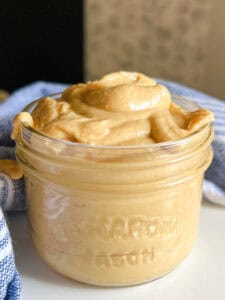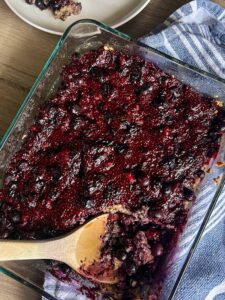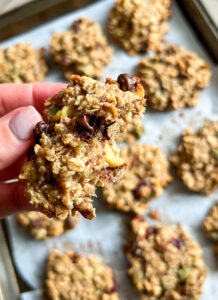Making your own oat flour at home is one of the simplest and most satisfying kitchen hacks. Whether you’re diving into gluten-free baking, trying to sneak more whole grains into your family’s meals, or just looking to save money on specialty flours, this easy oat flour recipe will be your secret weapon.
Using just one ingredient—quick oats or rolled oats—you can whip up a batch of finely ground flour perfect for everything from oat flour pancakes to chocolate chip cookies. Ready to learn how? Let’s dig in.
Why You’ll Love This Easy Oat Flour Recipe
- It uses one simple ingredient you probably already have.
- It’s naturally gluten-free (just make sure to use certified gluten-free oats).
- You’ll save money compared to buying store-bought oat flour like Bob’s Red Mill.
- It’s quick, with a prep time of under 5 minutes.
- You control the texture—make it coarse or super fine!
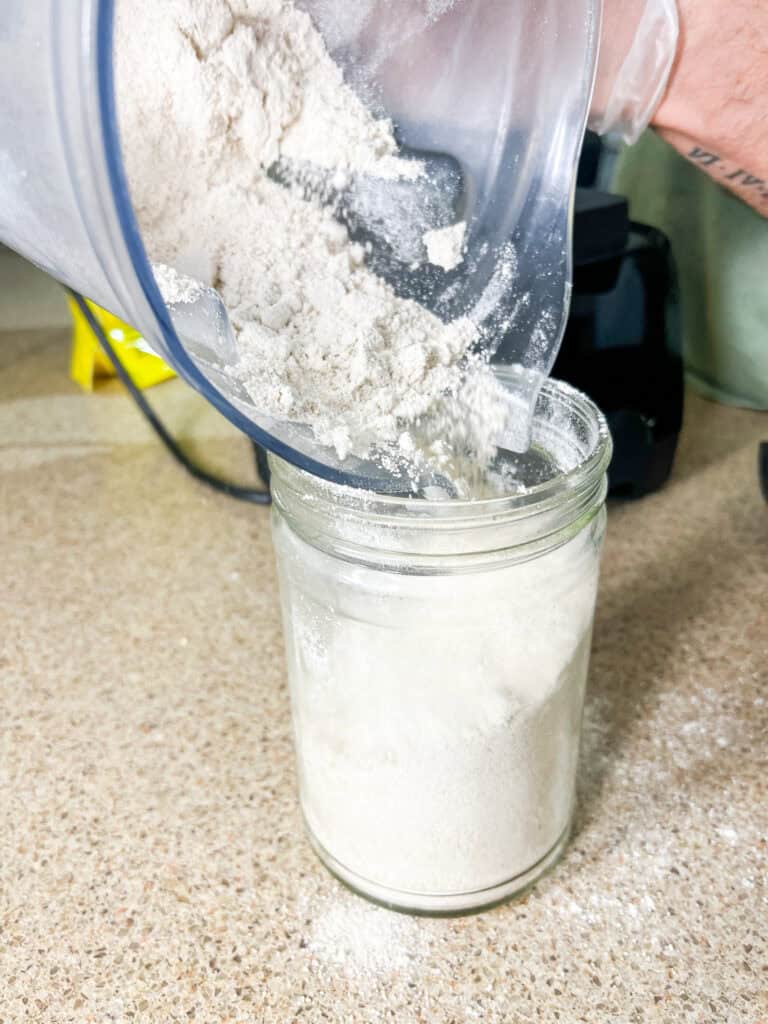
Benefits of Oat Flour
Oat flour isn’t just a gluten-free flour alternative—it’s also:
- Rich in whole grains, offering fiber and nutrients.
- A source of soluble fiber, which can help regulate blood sugar.
- Easier to digest than regular white flour or whole wheat flour.
- Great for heart health and keeping you full longer.
- Perfect for anyone with celiac disease or following a gluten-free diet.
What Is Oat Flour?
Oat flour is simply finely ground oats—that’s it! It’s typically made from quick oats, rolled oats, or old-fashioned oats.
Types of Oats You Can Use
- Quick oats / Quick-cooking oats – Blend fast and give a light flour.
- Rolled oats / Old-fashioned oats – Most commonly used for oat flour.
- Steel-cut oats – Can be used, but need a powerful high-speed blender or grain mill.
- Whole oats / Raw oats – Less processed, but will still work!
❗Note: Don’t use instant oatmeal—it’s too processed and may have added ingredients.
Is Oat Flour Gluten-Free?
Yes—if you use certified gluten-free oats. Oats are naturally gluten-free, but they can be contaminated during the manufacturing process. Look for labels to be sure!
Ingredients & Substitutions
You only need:
- Quick oats or rolled oats
That’s it! No need for anything fancy. For best results, use Bob’s Red Mill, One Degree Organic, or other brands offering certified gluten-free oats.
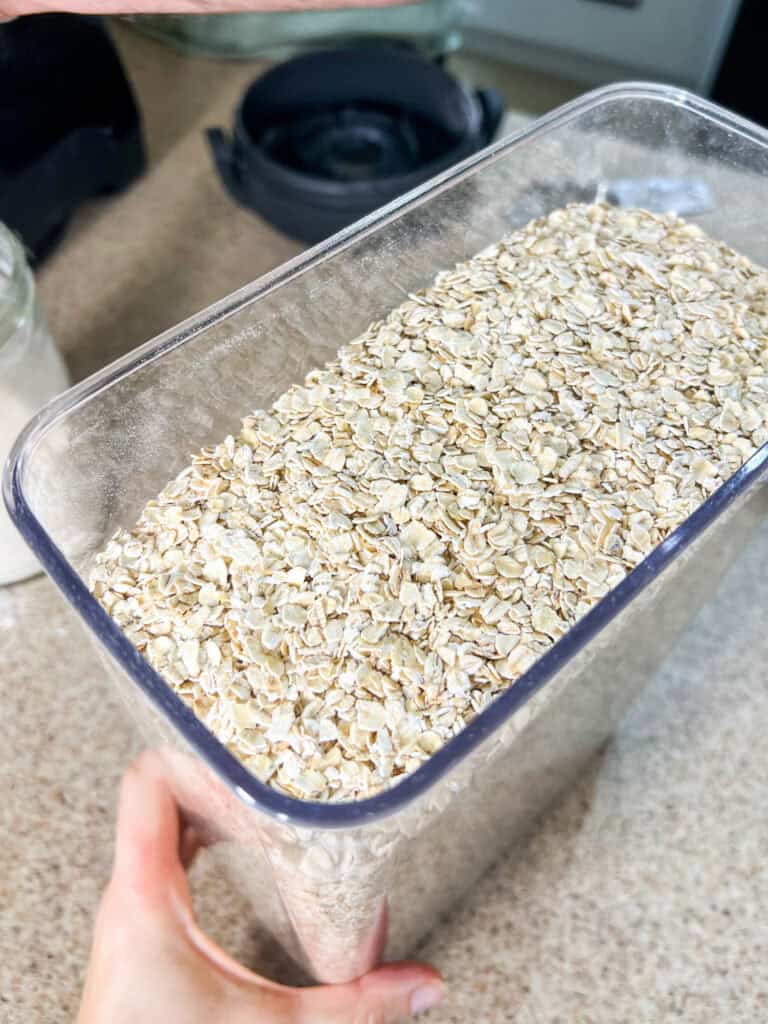
Helpful Tools
Making DIY oat flour is all about using the right tools.
High-Speed Blender vs. Food Processor
- A high-speed blender (like Vitamix or Blendtec) creates the finest powder.
- A food processor works well too but may take longer and be less consistent.
- If you have a grain mill, even better for ultra-fine texture.
Best Storage Containers
- Use an airtight container to keep your homemade oat flour fresh.
- Mason jars or flip-top glass jars are ideal.
- Label the jar with the date!
How to Make This Easy Oat Flour Recipe
Let’s break it down step by step.
Step 1: Prep
- Fill your blender or food processor with oats.
- 1 cup of oats = just under 1 cup of oat flour
- For a full cup of oat flour, use 1 cup + 2 tbsp of oats.
- Make sure there’s enough to cover the blades.
📌Tip: If the oats aren’t blending well, add more to help them circulate.
Step 2: Blend
- Blend for 30 seconds to 1 minute.
- You want a light, powdery flour texture.
- If you see chunks, keep blending.
- Stop and shake or stir the oats as needed to avoid clumping.
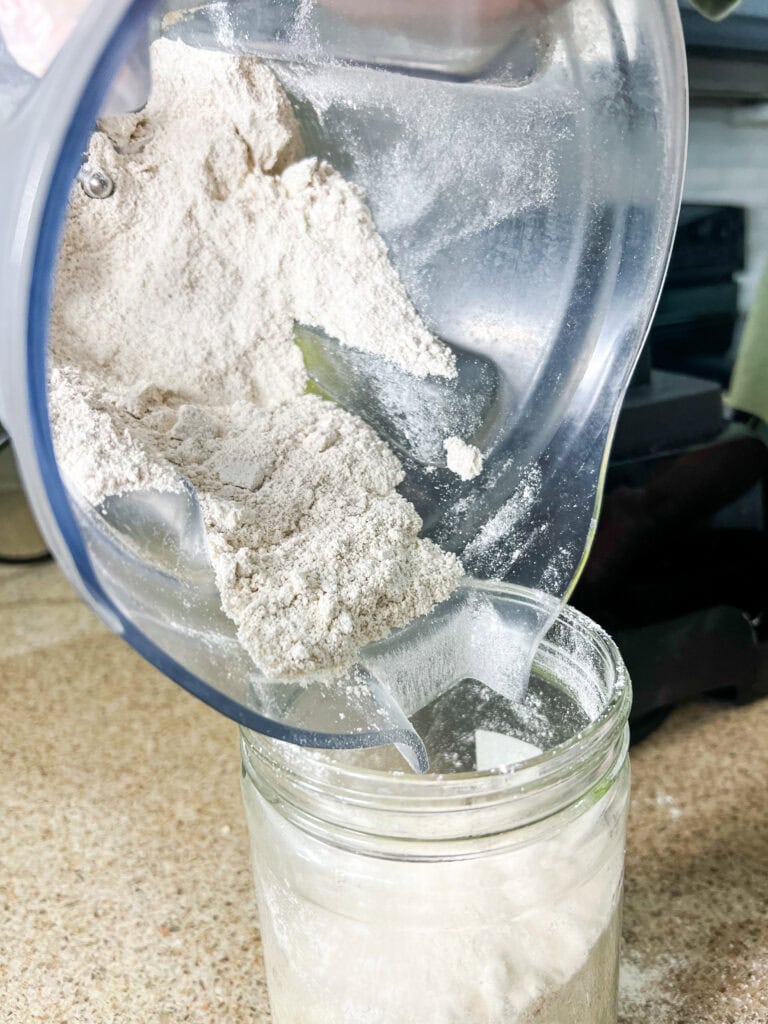
Step 3: Store
- Transfer to an airtight container.
- Store at room temperature for up to 3 months.
- Label with the date and type of oats used.
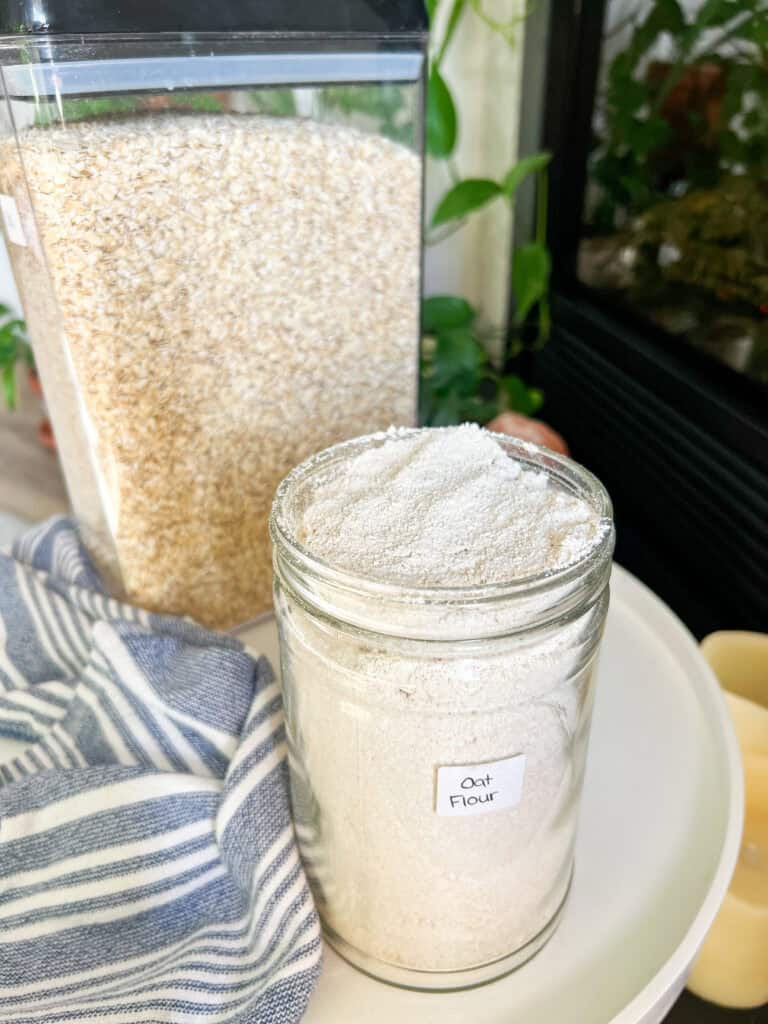
Tips & Tricks
How to Get a Fine Powder Texture
- Use a high-speed blender.
- Sift the flour if needed for ultra-fine results.
- Blend in small batches for more control.
Using Weight Measurements for Best Results
- 1 cup of oat flour = about 90–100 grams
- Always weigh if you’re subbing in baking for accuracy!
Small Batches vs. Bulk
- Make small batches for fresh flour on demand.
- Or prep in bulk and store in the pantry.
How to Use Oat Flour in Baking
Sweet Recipes with Oat Flour
- Oat flour banana bread
- Oat flour muffins
- Chocolate chip cookies
- Oat flour brownies
- Oat flour pancakes
- Overnight oats (with a spoonful for texture!)
- Quick breads
Savory Recipes with Oat Flour
- Oat bread
- Savory muffins
- Flatbreads
- Breading for tofu or veggies
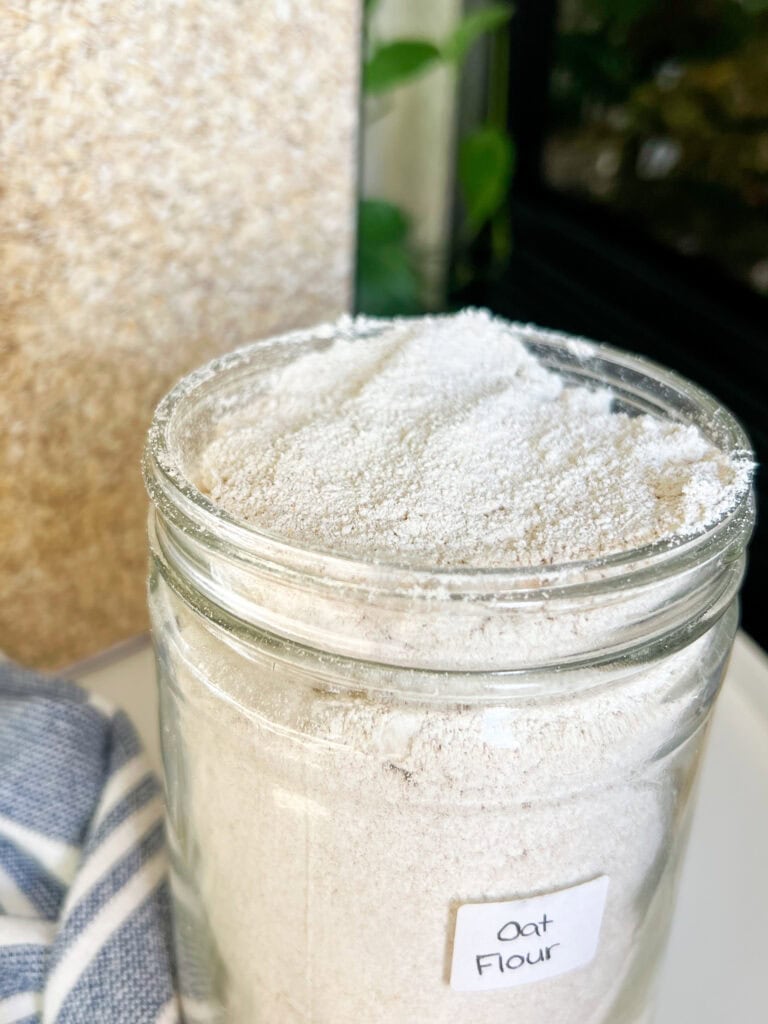
Substituting Oat Flour for Other Flours
Oat Flour vs. All-Purpose Flour
- Oat flour is softer and absorbs more liquid.
- Use a blend of oat flour and other flours (like free flour blend) for best texture in baking.
Oat Flour vs. Whole Wheat Flour
- Oat flour is lighter and has a mild, slightly sweet flavor.
- Great in muffins and pancakes.
Oat Flour vs. Almond Flour
- Almond flour has more fat, oat flour is higher in carbs.
- Try combining for fluffy texture in gluten-free baking.
Storing and Shelf Life
Room Temperature vs. Fridge
- Room temperature is fine for up to 3 months.
- For longer storage, keep it in the fridge or freezer.
Pro Tip: Always use a dry spoon when scooping to prevent moisture.
Frequently Asked Questions
Can I make oat flour with rolled oats or quick oats?
Yes, both rolled oats and quick oats can be used to make oat flour. Rolled oats tend to produce a slightly coarser flour, while quick oats yield a finer texture. Choose based on your recipe’s requirements.
Is oat flour gluten-free?
Oats are naturally gluten-free. However, to ensure your oat flour is gluten-free, use certified gluten-free oats to avoid cross-contamination during processing.
How long can I store homemade oat flour?
Store homemade oat flour in an airtight container at room temperature for up to 3 months. For extended freshness, you can refrigerate or freeze it.
What’s the best blender or food processor to use?
A high-speed blender, such as a Vitamix or Blendtec, is ideal for making fine oat flour. A food processor can also be used but may result in a coarser texture.
Can I use oat flour in place of all-purpose flour?
Oat flour can replace all-purpose flour in many recipes, especially in baking. However, because it lacks gluten, it may not provide the same structure. Consider combining it with other flours or using binding agents.
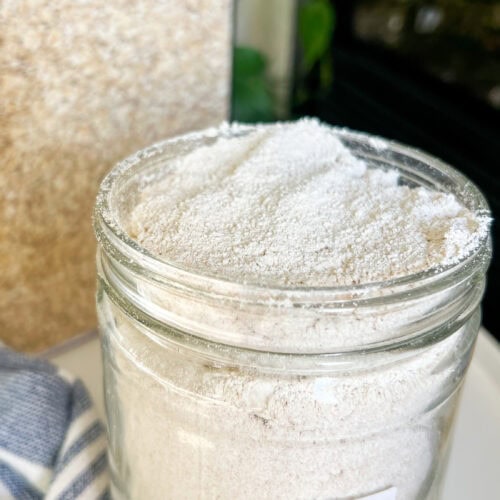
Easy Oat Flour Recipe
Ingredients
- Quick oats or rolled oats
Instructions
Prep
- Fill your blender with the amount of oats you would like to turn into flour. 1 cup of quick oats makes just under 1 cup of oat flour. (If you are making just 1 cup, add 1 cup of quick oats + 2 tbsps).
- Make sure you have enough oats in the blender to fully cover the blades. You may need to add more oats if it's not blending well.
Blend
- Blend the oats for 30 seconds up to 1 minute or until it turns to flour. There should be a light flour powdery texture to it. If there are any oat chunks, keep blending. See photos for reference.
Store
- Oat flour can be made on demand if needed, but it also stores beautifully in a jar for up to 3 months.
Conclusion: Oat Flour Recipe
This easy oat flour recipe proves that sometimes the best kitchen tricks are the simplest. With just one simple ingredient and a blender, you can make your own oat flour and transform your baking. Whether you’re going fully gluten-free or just experimenting with whole grains, having a jar of homemade oat flour on hand is a total game-changer.
Give it a try, and see how this DIY pantry staple becomes your new go-to for both sweet and savory recipes.

